PsychNewsDaily Publishers
100 Summit Drive
Burlington, MA, 01803
Telephone: (320) 349-2484
PsychNewsDaily Publishers
100 Summit Drive
Burlington, MA, 01803
Telephone: (320) 349-2484
Army Basic Training consists of four phases over approximately 10 weeks, focusing on discipline, teamwork, and essential military skills, preparing recruits for their service.
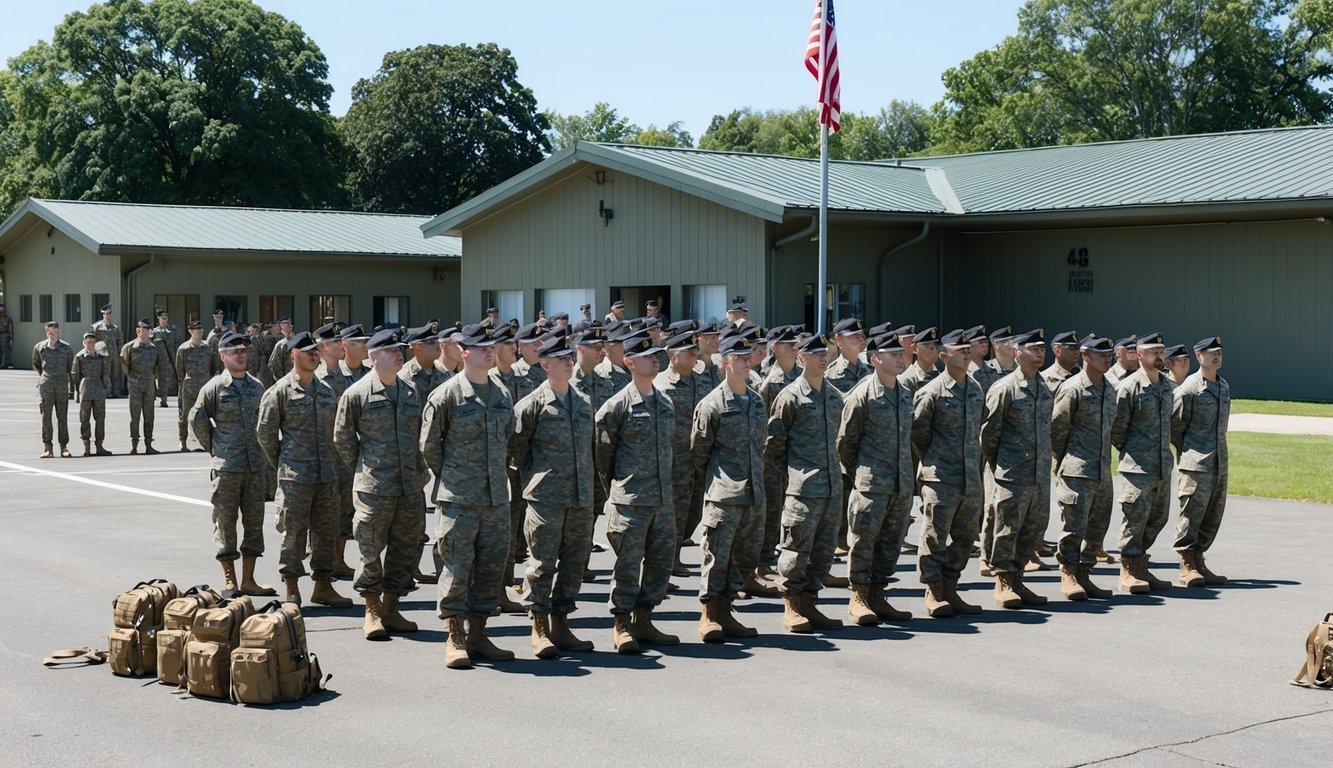
Army Basic Training is a crucial step for anyone looking to join the U.S. Army. The start dates for Basic Combat Training (BCT) in 2024 are set to occur almost weekly throughout the year, making it easy for new recruits to plan their journey. This training is designed to build discipline and teamwork, preparing recruits for the demanding life of a soldier.
Every recruit should be aware that these ship dates are scheduled in advance, allowing them to align their enlistment plans with the BCT cycles. This ensures they can begin their military service in a timely manner. Joining the Army is about more than just training; it’s about becoming part of a larger mission and community.
Enlisting in the Army opens doors to lifelong skills and experiences. Throughout their journey, recruits will learn essential skills that will not only help them in the Army but also in their lives beyond military service. Understanding the timing of BCT is an important first step in this exciting adventure.

Army Basic Training is a critical step for those who want to become soldiers. It focuses on teaching essential skills, core values, and the importance of discipline and teamwork. Through various phases, recruits prepare mentally and physically for their military careers.
Basic Training, often called boot camp, includes four phases over about 10 weeks. Each phase has specific goals and training activities.
Red Phase: This initial phase lasts around three weeks. Recruits learn discipline, physical fitness, and basic military skills. They also focus on Army values, building a strong foundation.
White Phase: This phase introduces combat skills. Recruits practice marksmanship and weapons training. They also engage in team-building exercises, fostering cooperation.
Blue Phase: Lasting about three weeks, this phase ramps up fighting skills and tactics. Recruits will manage stress and build resilience while integrating their training with teamwork.
Graduation: The culmination of training celebrates the recruits’ hard work. Graduating symbolizes their readiness to serve and live by core Army values.
Before starting Basic Training, recruits must meet specific requirements. This includes passing a physical fitness test and medical examination. They should aim for high levels of physical fitness, as the training is intensive.
New recruits also learn about Army core values: loyalty, duty, respect, selfless service, honor, integrity, and personal courage. These values will guide their conduct during training and service.
Packing the right gear is vital. Recruits are often given a list of what to bring. This may include uniforms, boots, personal items, and hygiene products. Proper preparation ensures recruits can focus on training right from Day One.
Discipline is a cornerstone of Army training. Recruits learn to follow orders, manage time, and maintain self-control. This will be crucial throughout their military careers.
Teamwork is equally important. Soldiers must work together effectively to succeed in various missions. Basic Training encourages camaraderie through group exercises and challenges.
Recruits develop trust and reliance on one another, creating a strong sense of unity. This teamwork fosters a supportive environment, improving morale. Ultimately, discipline and teamwork are vital for building effective soldiers ready to serve their country.
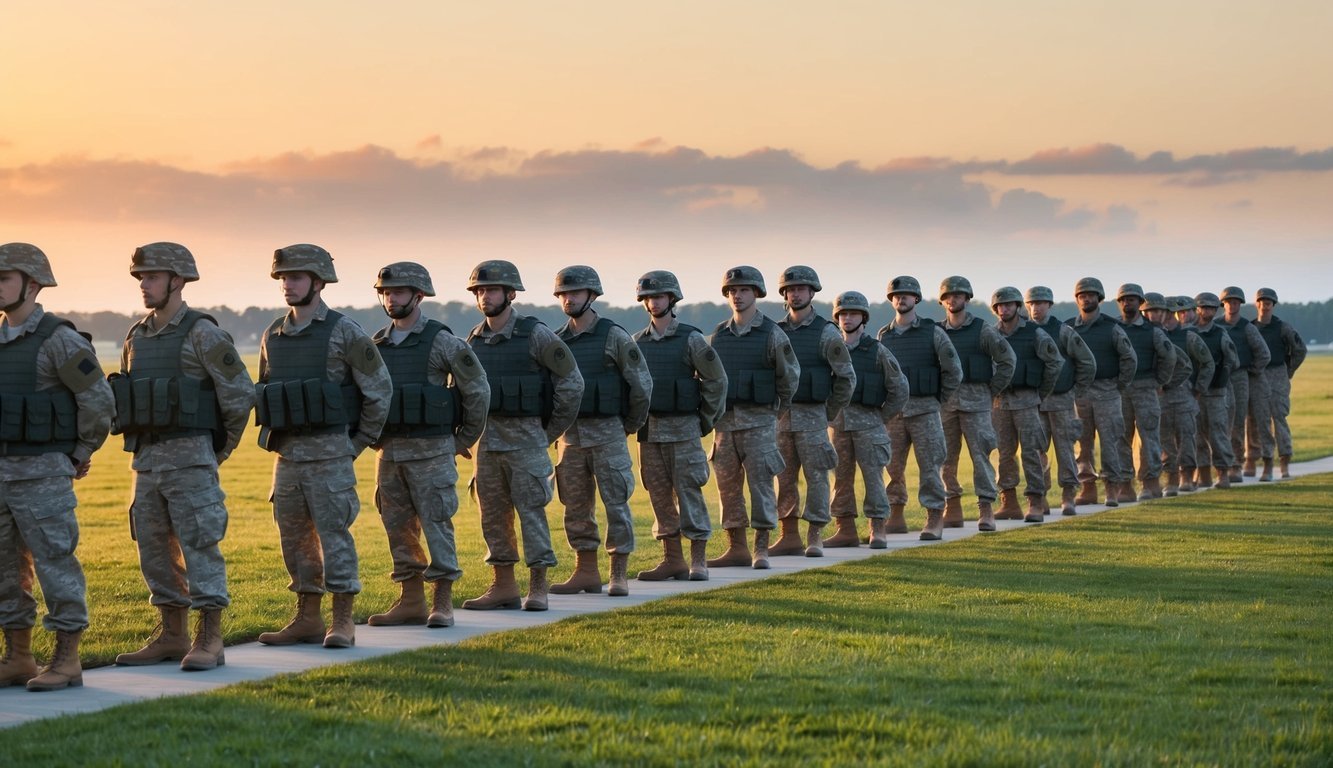
Knowing the important dates for Army Basic Training in 2024 is essential for new recruits. It helps them prepare for their journey into Army life.
In 2024, Army Basic Training starts at different times throughout the year. Recruits can expect cycles beginning nearly every week. The first cycle of the year, for instance, often kicks off in January.
Key dates to remember include:
By keeping track of these dates, recruits can better prepare for their training schedule.
As new recruits go through Basic Training, they will encounter some important milestones. Here are a few of them:
Recruits should also reference the official Army academic calendar for specific class start dates. Being aware of these milestones prepares them for significant events during their training period.
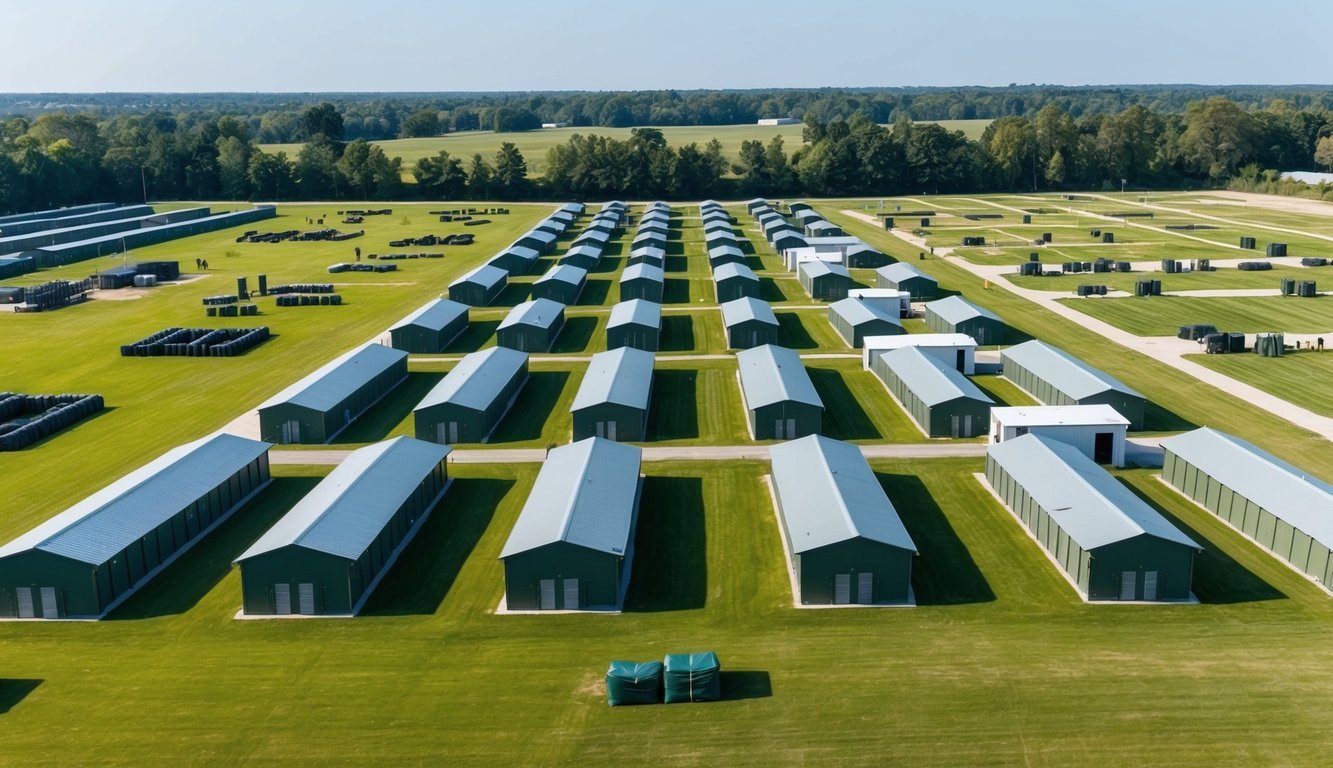
Army Basic Training takes place in various training locations across the United States. Each location has its own unique programs and structures tailored to different combat and non-combat training needs. The training period usually lasts for about 10 weeks.
The Army uses several primary training posts for Basic Combat Training (BCT). These include:
Fort Moore, Georgia: Here, soldiers focus on infantry training. The program emphasizes physical fitness, teamwork, and combat skills.
Fort Jackson, South Carolina: Known for its non-combat training, this post prepares recruits with essential skills necessary for their military careers.
Fort Leonard Wood, Missouri: This location specializes in engineering, military police, and chemical training. Recruits receive hands-on experience in these critical areas.
Fort Sill, Oklahoma: Soldiers at this site receive artillery training, preparing them for specific roles in field operations.
Each training post offers different focuses based on unit needs.
At Fort Moore, soldiers experience rigorous physical training. It includes obstacle courses and marksmanship.
At Fort Jackson, recruits learn the Army’s core values and basic soldiering skills. They also engage in classroom instruction.
Fort Leonard Wood combines practical exercises with classroom learning tailored to engineering tasks. Soldiers learn both on the field and in simulated environments.
Finally, Fort Sill emphasizes technical skills needed for artillery operations, teaching recruits how to operate and maintain weapons systems.
These variations help ensure soldiers are well-prepared for their specific roles within the Army.

After completing Basic Training, soldiers transition into new and exciting phases of their military careers. This period includes graduation events, advanced training paths, and various career opportunities within the Army.
Graduation from Basic Training is a proud moment for soldiers and their families. Typically, families are invited to attend the ceremony, which includes a parade and the opportunity to see their loved ones in uniform.
After the ceremony, soldiers receive their Army Physical Fitness Test (APFT) results and may have a chance to take pictures with friends and family. This event marks the end of an intense training period and the start of new adventures.
Once graduation is complete, many soldiers prepare for the next step: Advanced Individual Training (AIT).
After graduation, soldiers attend Advanced Individual Training (AIT), where they learn specific skills related to their Military Occupational Specialty (MOS).
For example, an infantry soldier will receive combat training focused on ground operations, while a military police soldier will learn law enforcement duties. Combat engineers focus on construction and demolition skills.
AIT durations vary based on the MOS, from a few weeks to several months. Soldiers in the Army Reserve or National Guard may complete their AIT before returning home.
With a completed basic training and AIT, soldiers are ready to begin their careers in the Army. They can serve in active duty, the Army Reserve, or the Army National Guard. Each path offers diverse roles and opportunities.
Some soldiers may become infantry members, engaging in ground combat and strategic missions. Others could join military police, ensuring security and order. Combat engineers play crucial roles in infrastructure and demolitions.
These roles not only offer military experience but also valuable skills for future careers. Whether active or reserve, soldiers can develop and grow as leaders while serving their country.
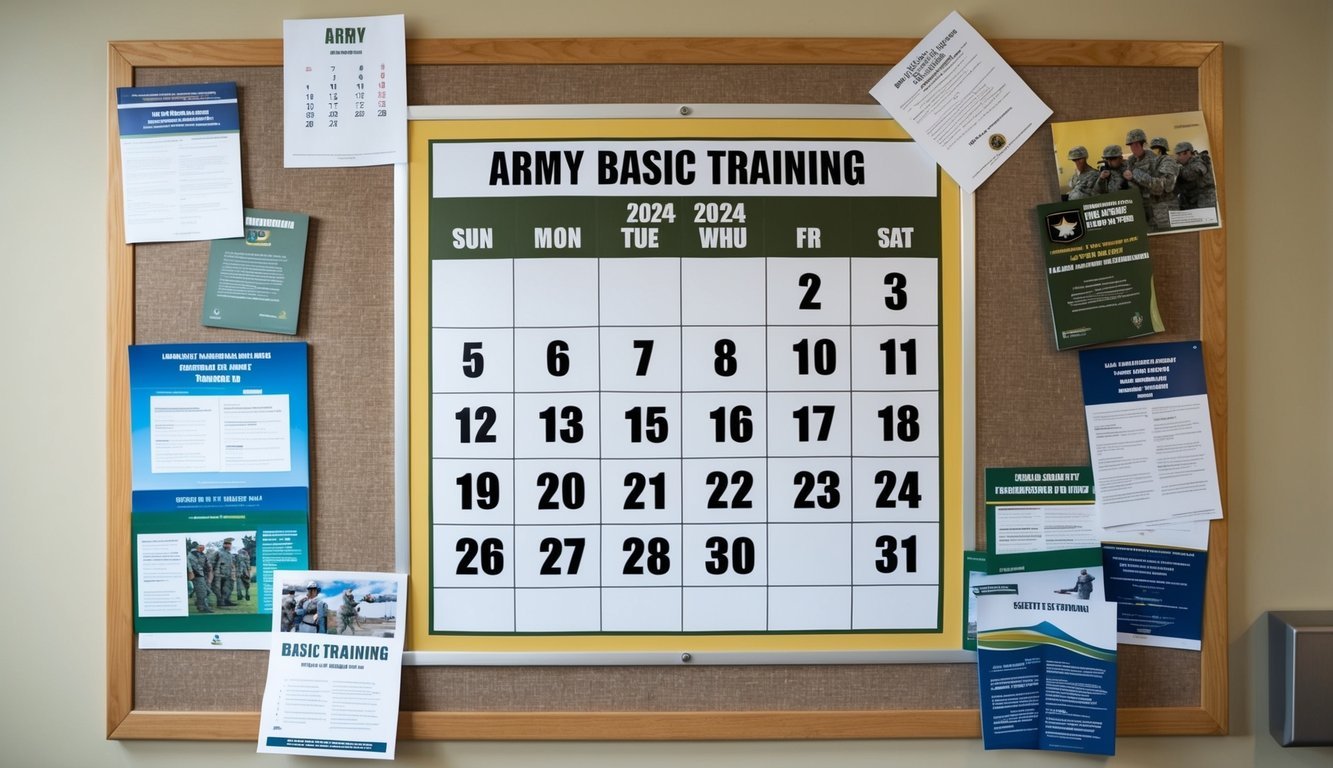
Trainees and their families should know several key details to make the transition to Army Basic Training smoother. This section discusses what trainees should bring, how families can stay connected, and essential information about visitations and graduation.
Trainees need to pack wisely when preparing for Basic Training. Essential items include:
It’s important to avoid bringing valuable items such as electronics or excessive personal items. Trainees may have limited time to settle in and adjust. They will receive uniforms during reception, so personal clothing should be minimal.
Communication is vital for families and trainees. While trainees may not have much free time, they can connect in a few ways:
It’s beneficial for families to be patient and supportive. The training can be intense, and having a kind message can boost morale.
Visitation policies vary by post and are subject to change. Generally, families can expect:
During these events, families can celebrate their trainee’s hard work. Be prepared for potential security measures, and plan to arrive early. Enjoying this time together can create lasting memories.
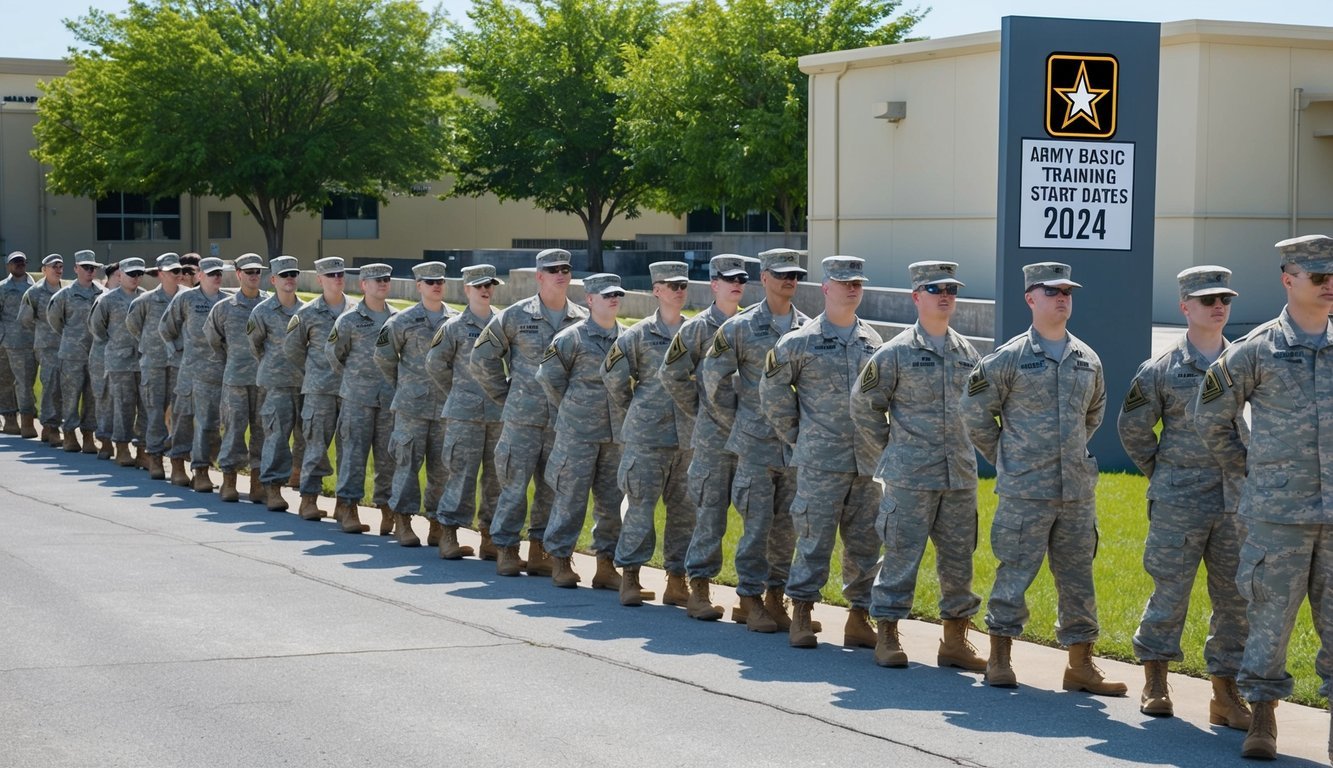
Many new recruits have questions about Army basic training. This section addresses common inquiries related to the duration, daily schedule, and requirements to enlist.
Army basic training usually lasts about 10 weeks. After that, recruits attend Advanced Individual Training (AIT), which can take from a few weeks to several months, depending on the Military Occupational Specialty (MOS).
To find start dates for Army basic training at Fort Jackson, recruits should check the Army’s official website or contact their recruiter. Recruiters provide up-to-date information on training cycles and start times.
During basic training, the daily schedule is structured and intense. Recruits wake up early and participate in physical training, classes, and other activities like marching and rifle training throughout the day.
Yes, basic training locations can vary by MOS. Most recruits will go to predominately the same basic training but some may end up at additional locations based on their specific training needs.
To enlist, individuals must meet age, health, and education requirements. They usually need to pass the Armed Services Vocational Aptitude Battery (ASVAB) and undergo a medical exam before starting training.
There isn’t a definitive answer for the best location, as it depends on personal experiences. Fort Benning, Fort Jackson, and Fort Leonard Wood are known for their unique training environments and facilities.
Each recruit may have a different preference based on what they value in their training experience.